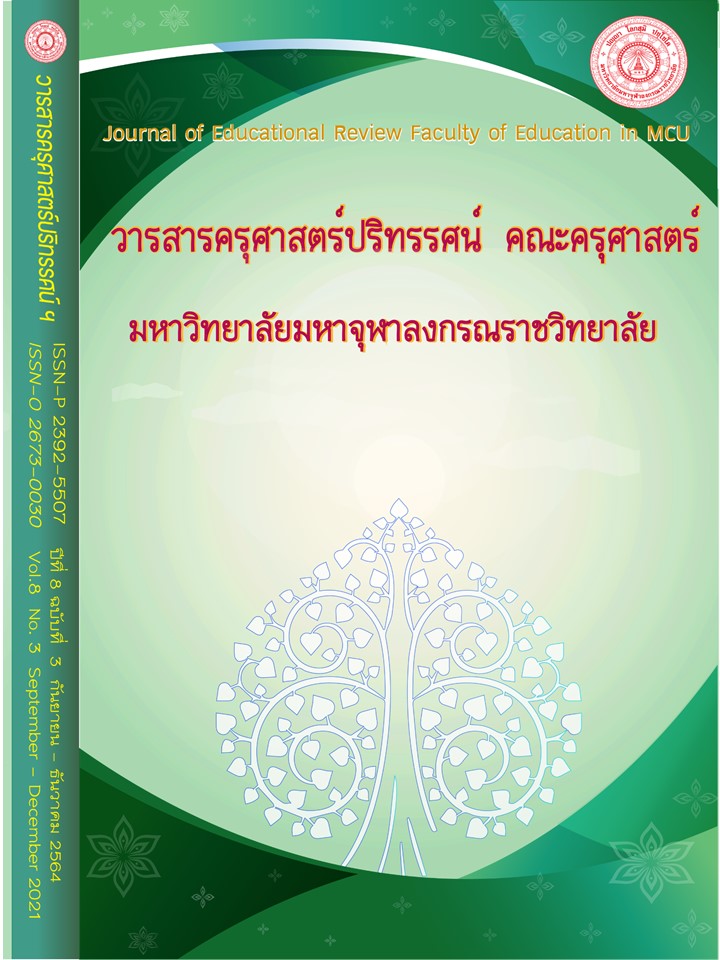PRODUCTION OF THAI TRADITIONAL MEDICINE GRADUATES: BACKGROUND SCHOOL OF TRADITIONAL AND ALTERNATIVE MEDICINE, CHIANG RAI RAJABHAT UNIVERSITY
Main Article Content
Abstract
This qualitative research article aimed to track the background of the graduate production in the bachelor degree of Thai Traditional Medicine program, School of Traditional and Alternative Medicine (STAM), Chiang Rai Rajabhat University. This was undertaken by documentary analysis and in-depth interview with the founding dean of STAM. The results showed that the commencement of the graduate production of STAM arose from the mission of the founding dean on the project of consolidating and revising of Lanna traditional medicine theories and practices in the upper northern Thailand. The outcomes were needed to extend into the development of a bachelor degree program establishment. However, with professional legal limitations that still do not support the functions of traditional medicine (TM) doctors, the traditional medicine Program could not be established. Fortunately, the Thai traditional medicine (TTM) committee also required an institute for yielding of Thai traditional medicine practitioners according to the Healing Arts Practices Act, BE 2542. This coincident point enhanced the establishment of TTM institute leading to a mutual agreement. Besides, some external situations like government promotion, people’s needs and legal support also supplemented the establishment of Thai traditional medicine institute, which mainly provided the development of body of TTM knowledge and teaching professors via R and D process.
Article Details
ทัศนะและความคิดเห็นที่ปรากฏในบทความในวารสารฉบับนี้ถือเป็นความรับผิดชอบของผู้เขียนบทความนั้นเพียงผู้เดียว และไม่ถือเป็นทัศนะและความรับผิดชอบของกองบรรณาธิการ
กองบรรณาธิการขอสงวนสิทธิ์ในการคัดเลือกบทความลงตีพิมพ์และจะแจ้งให้เจ้าของบทความทราบหลังจากผู้ประเมินบทความตรวจอ่านบทความแล้ว
ต้นฉบับที่ได้รับการตีพิมพ์ในวารสารครุศาสตร์ปริทรรศน์ คณะครุศาสตร์ มหาวิทยาลัยมหาจุฬาลงกรณราชวิทยาลัย ถือเป็นกรรมสิทธิ์ของคณะครุศาสตร์ มหาวิทยาลัยมหาจุฬาลงกรณราชวิทยาลัย ห้ามนำข้อความทั้งหมดหรือบางส่วนไปพิมพ์ซ้ำ เว้นเสียแต่ว่าจะได้รับอนุญาตจากมหาวิทยาลัยฯ เป็นลายลักษณ์อักษร
References
กนกอร เพียรสูงเนิน. (2562). การศึกษาเส้นประธานสิบ กรณีศึกษาเส้นกาลทารี. วิทยานิพนธ์การแพทย์แผนไทยมหาบัณฑิต. มหาวิทยาลัยราชภัฏเชียงราย.
คณะกรรมการพัฒนาภูมิปัญญาท้องถิ่นด้านสุขภาพแห่งชาติ. (2560). แผนยุทธศาสตร์การพัฒนาภูมิปัญญาไท สุขภาพวิถีไท ฉบับที่ 3 พ.ศ. 2560-2564. แหล่งที่มา http://www.thaihof.org/16766-2/ สืบค้นเมื่อ 20 ต.ค 2563.
ชำนาญ เล็กบรรจง. (2531). พัฒนาการหลักสูตรศิลปะหัตกรรม สาขาช่างโลหะรูปพรรณ วิทยาลัยศิลปหัตถกรรมนครศรีธรรมราช. วิทยานิพนธ์ครุศาสตรมหาบัณฑิต. จุฬาลงกรณ์มหาวิทยาลัย.
ฐิติรัตน์ ชัยชนะ และคนอื่นๆ. (2563). การศึกษาและติดตามผลการรักษาโรคข้อเข่าเสื่อมระยะเริ่มต้นด้วยการแพทย์แผนไทย. วารสารหมอยาไทยวิจัย. 6(1). 45-54
ปิณิดา ถนอมศักดิ์. (2558). การศึกษาและพัฒนากระบวนการวัดผลและประเมินผลการใช้การนวดไทย เพื่อการบำบัดรักษาอาการเจ็บป่วย. วิทยานิพนธ์การแพทย์แผนไทยมหาบัณฑิต. มหาวิทยาลัยราชภัฏเชียงราย.
รัฐธรรมนูญแห่งราชอาณาจักรไทย. (2560). ราชกิจจานุเบกษา. เล่ม 134 ตอนที่ 40 ก หน้า 15 (6 เมษายน. 2560).
วิทยาลัยการแพทย์พื้นบ้านและการแพทย์ทางเลือก มหาวิทยาลัยราชภัฏเชียงราย. (2550). หลักสูตรการแพทย์แผนไทยบัณฑิต หลักสูตรใหม่ พ.ศ.2546. เชียงราย: วิทยาลัยการแพทย์พื้นบ้านและการแพทย์ทางเลือก. (อัดสำเนา)
ศูนย์วิจัยและพัฒนาการแพทย์พื้นบ้าน สถาบันราชภัฏเชียงราย. (2544). โครงการสังคายนาองค์ความรู้หมอเมือง เพื่อพัฒนาระบบและตำราอ้างอิงของการแพทย์พื้นบ้านล้านนา. รายงานการวิจัย. ศูนย์วิจัยและพัฒนาการแพทย์พื้นบ้าน สถาบันราชภัฏเชียงราย.
สายฝน สมภูสาร และคนอื่นๆ. (2562). ผลการรักษาโรคเรื้อนกวางด้วยกรรมวิธีการแพทย์แผนไทย. วารสารวารสารการวิจัยกาสะลองคำ มหาวิทยาลัยราชภัฏเชียงราย. 13(1). 95-101
สำนักงานคณะกรรมการข้าราชการพลเรือน. (2555). มาตรฐานกำหนดตำแหน่ง ฉบับแก้ไขเพิ่มเติมครั้งที่ 2. แหล่งที่มา https://www.ocsc.go.th/job/แพทย์แผนไทย สืบค้นเมื่อ 12 ธ.ค. 2563.


